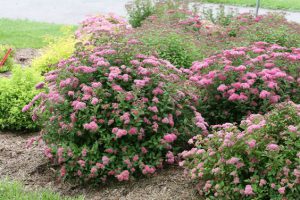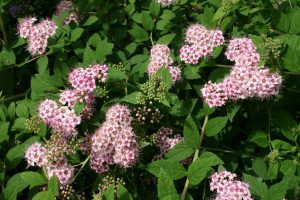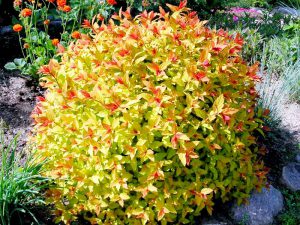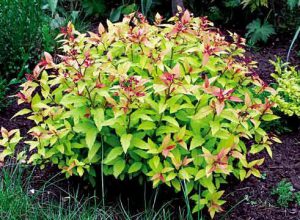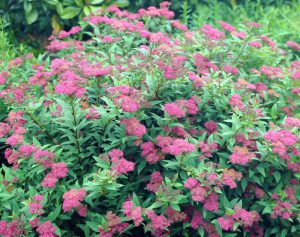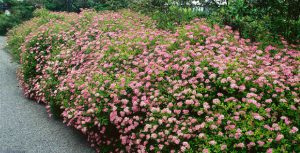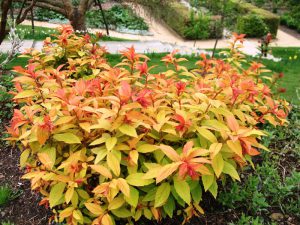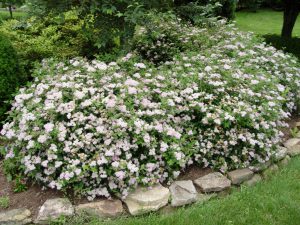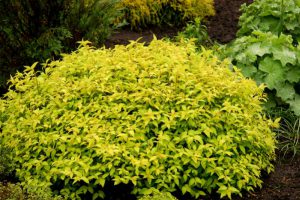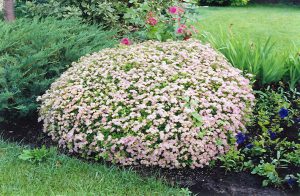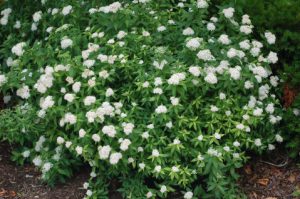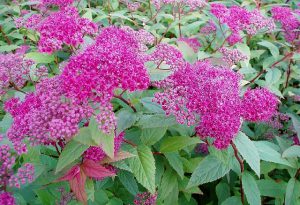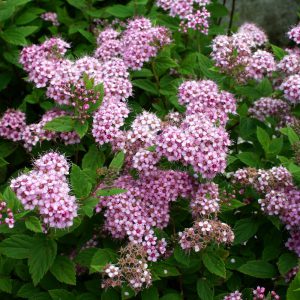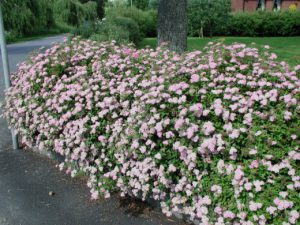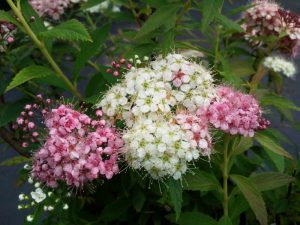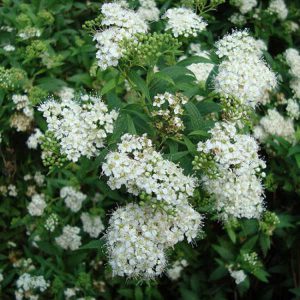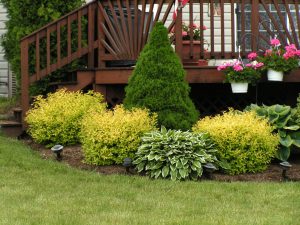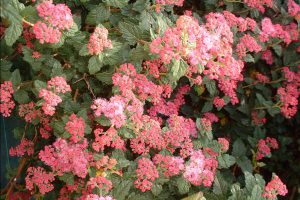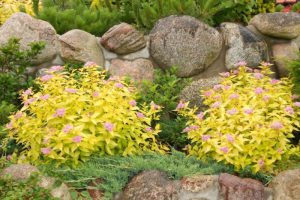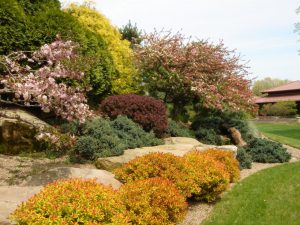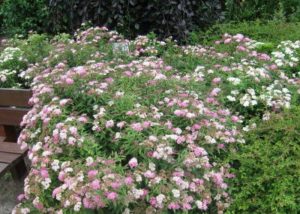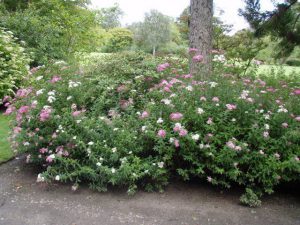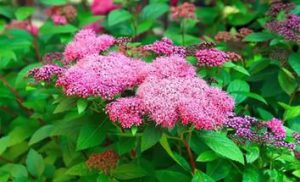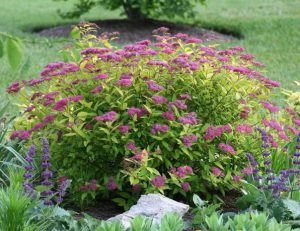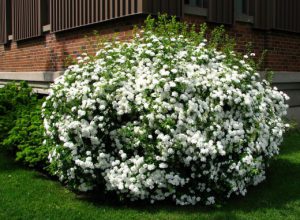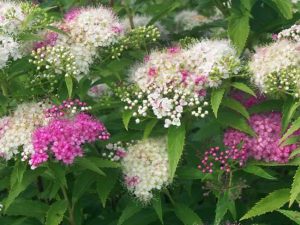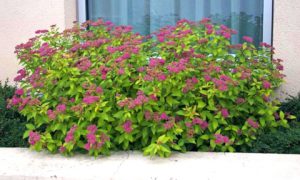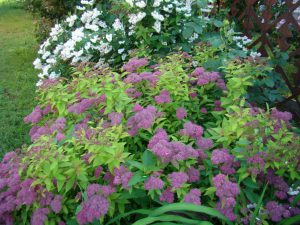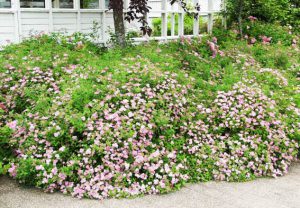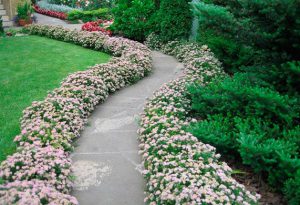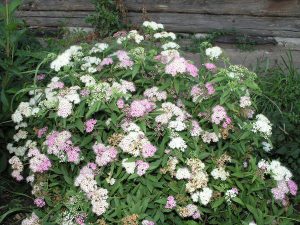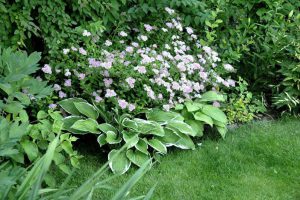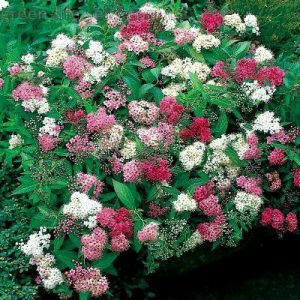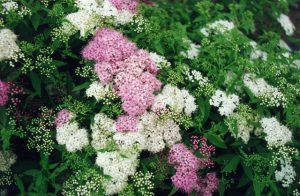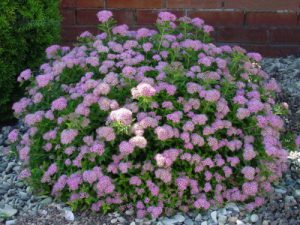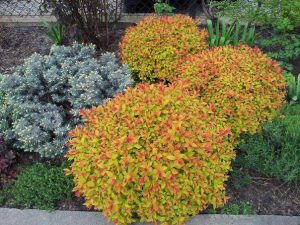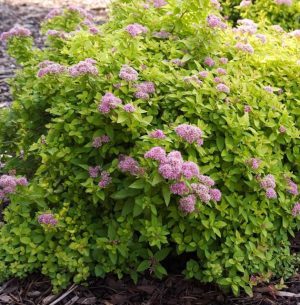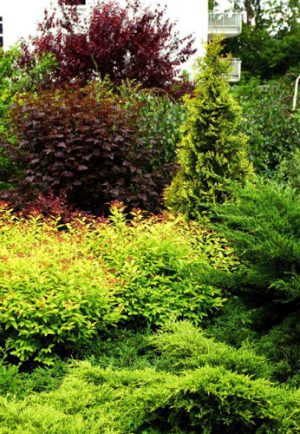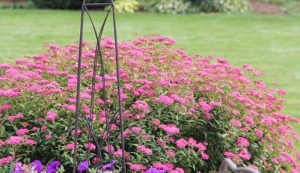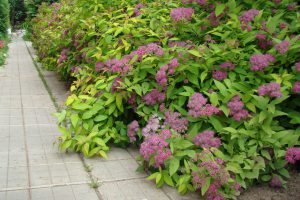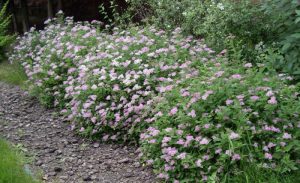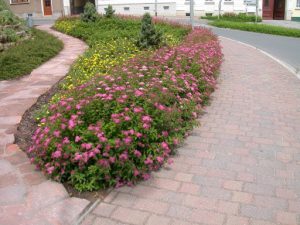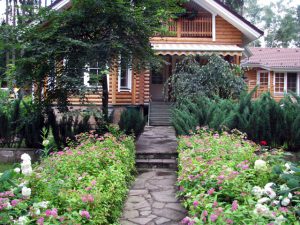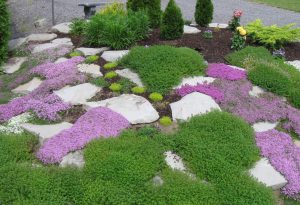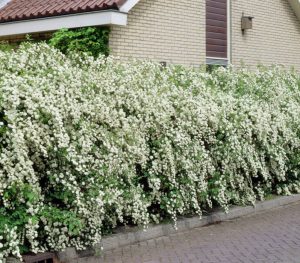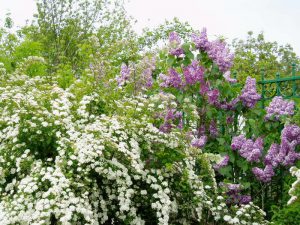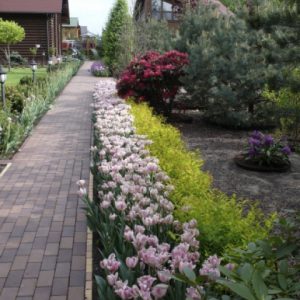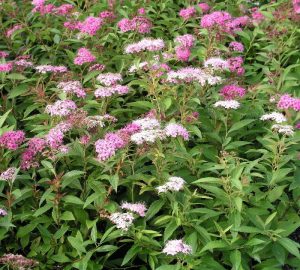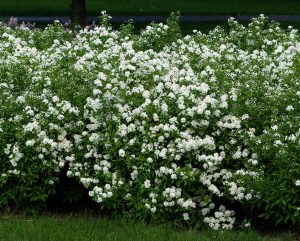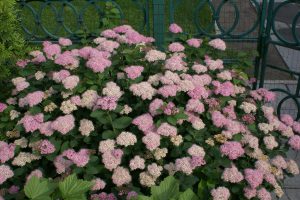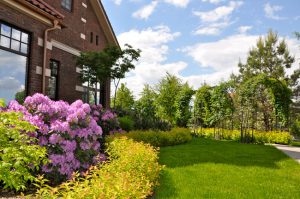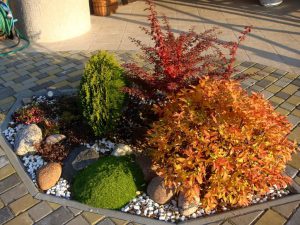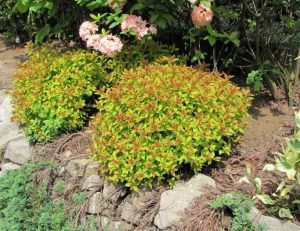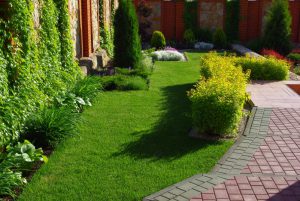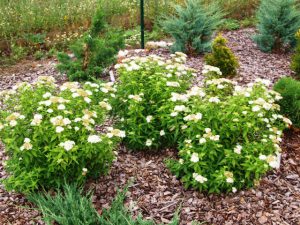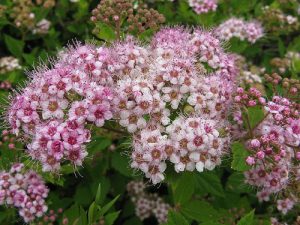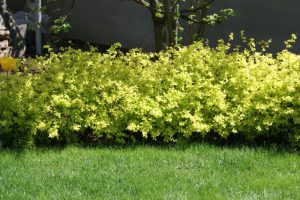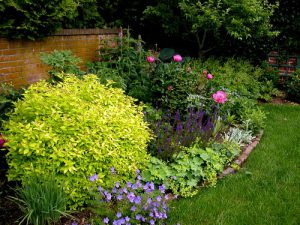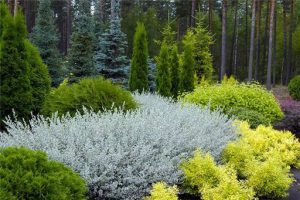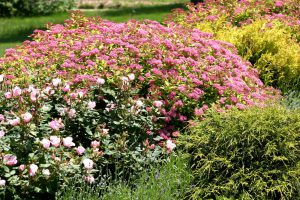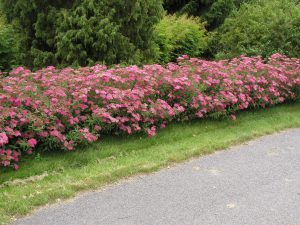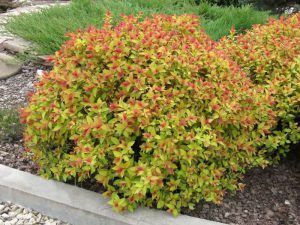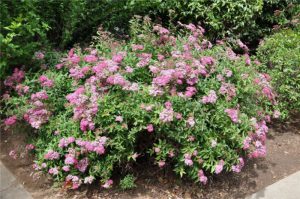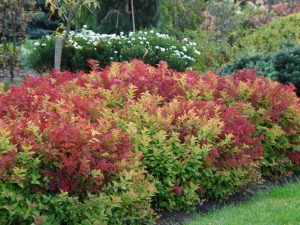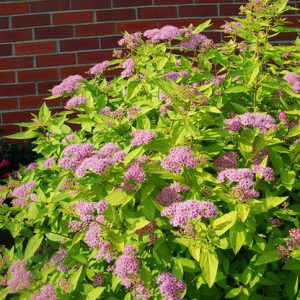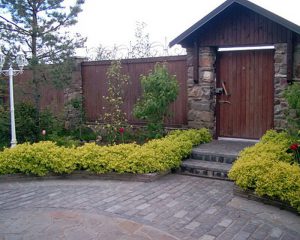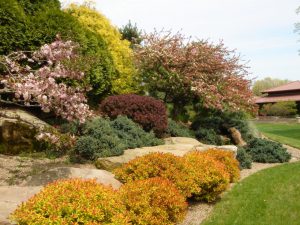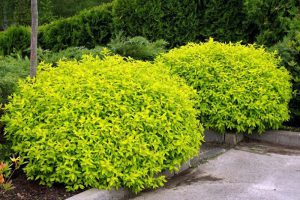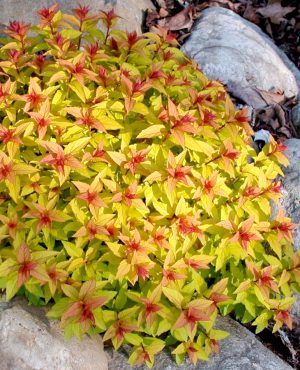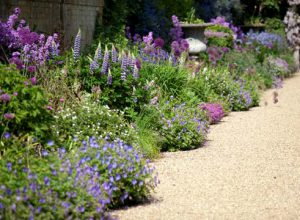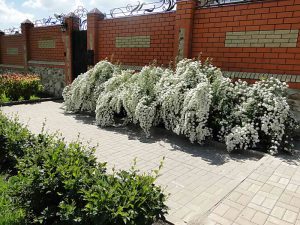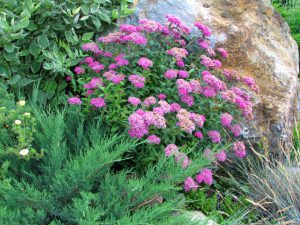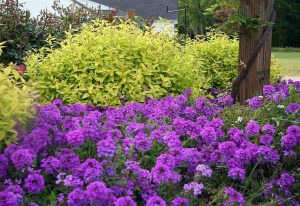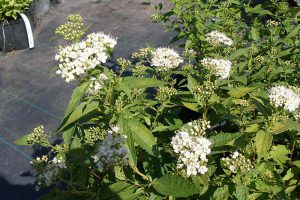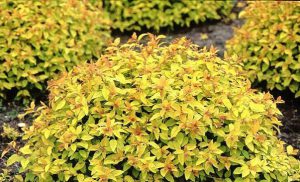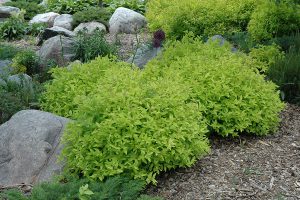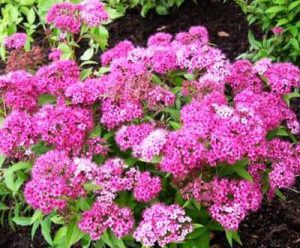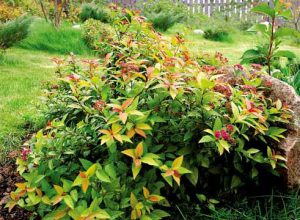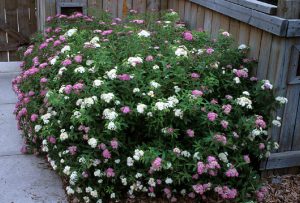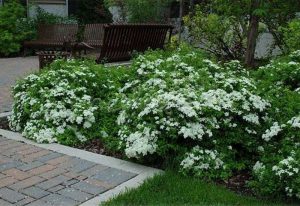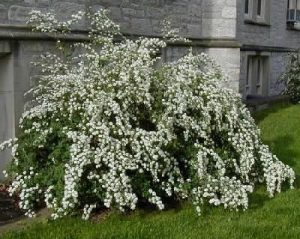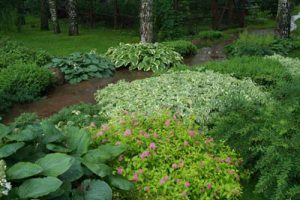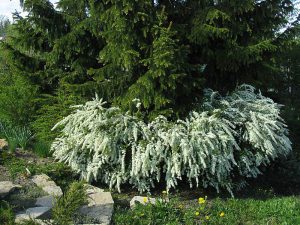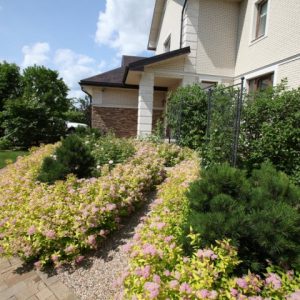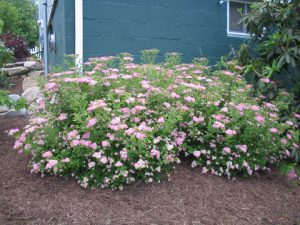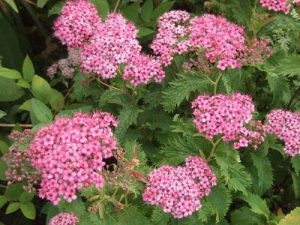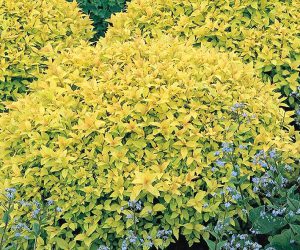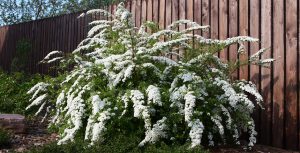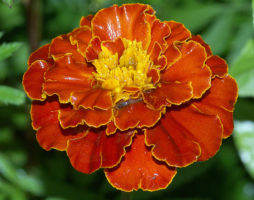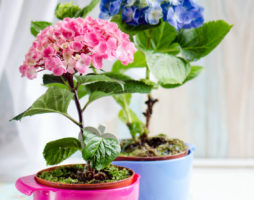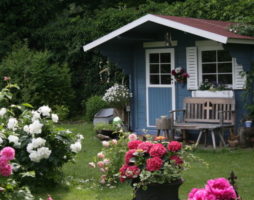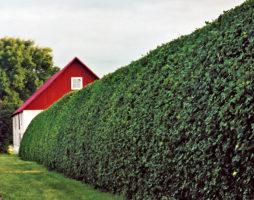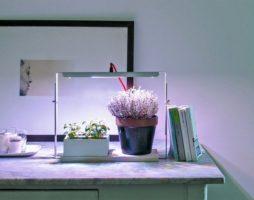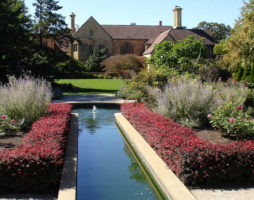Many plants are used in landscape design, however, the designers were especially interested in single species of shrubs, including Japanese spirea.
This species belongs to summer flowering. Plants perfectly tolerate a curly haircut, are easily rejuvenated, and have a wide range of applications. They are planted in hedges and borders, single and group plantings.
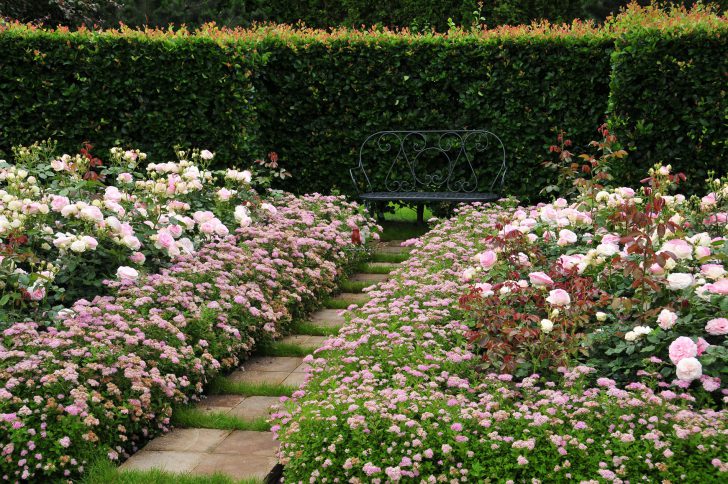
Japanese spirea is perfect for decorating borders
What is especially valuable is that these long and incredibly abundant flowering shrubs are not afraid of our harsh winters. They do not have to be constantly dug up and replanted. Plants are no less resistant to hot days;
Spirea is durable. With proper care, they can live up to 40 years. Add here the fact that the shrub is still a good honey plant, and you will understand that in the zone of risky farming, very few types of shrubs have such qualities, with great decorativeness.
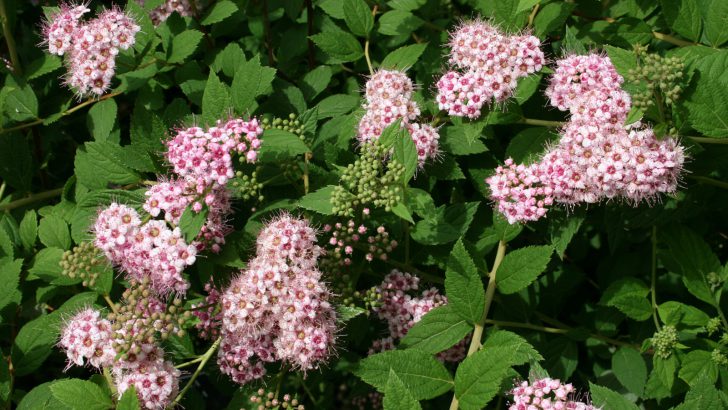
Japanese spirea is a long-lived plant.
The height of the Japanese spirea, however, as well as the shape of the crown, is very diverse. In the varietal list, you can see ten-centimeter umbrella dwarfs, and creeping forms, and two-meter giants with upright branches. Gently pink, white foamy or rich crimson flowering of spire bushes (depending on the species) lasts from early May to late autumn. There are species that can bloom repeatedly, which makes them a priority when creating garden compositions.
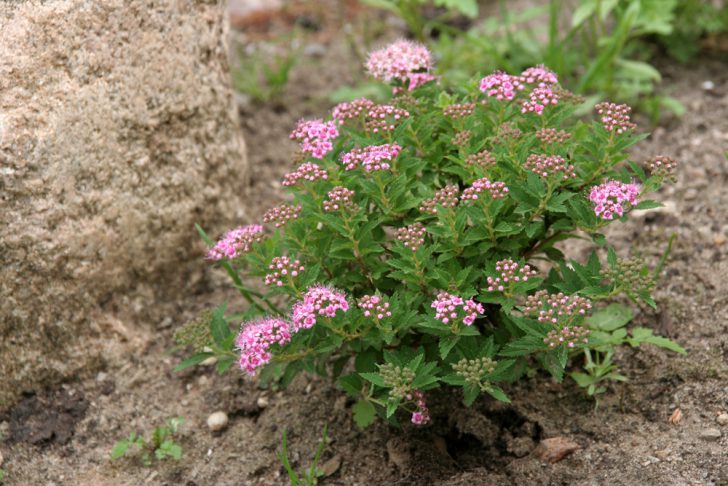
Japanese dwarf spirea
The leaves of the plant differ not only in shape, but also in texture. Their color changes over time, but the shrubs do not lose their attractiveness. They look especially beautiful in early spring and autumn. Since spireas are good both in flowering and in their normal state, it is customary to decorate with them:
1. Japanese gardens.
2. Rocky hills.
3. Flower beds.
4. Mixborders.
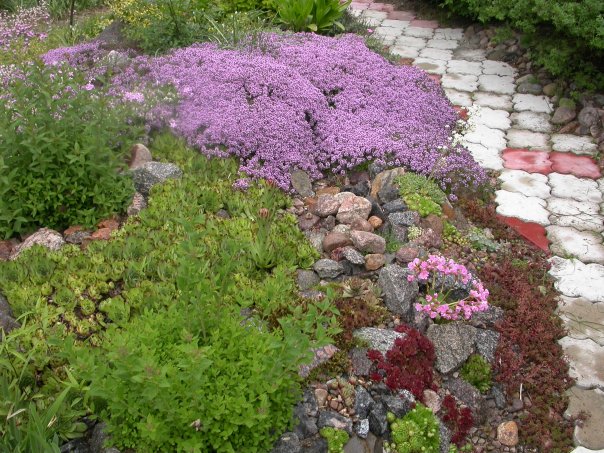
Making an alpine slide with Japanese spirea
Spireas are self-sufficient, therefore they can be used not only in group plantings and in creating edges under trees, but also as independent decorative elements of the garden landscape.
back to index ↑Japanese spirea: species diversity
golden princess
Dwarf look. The height of the shrub does not exceed half a meter. Golden Princess has beautiful pointed yellowish leaves and delicate pink petals of inflorescences. The leaves are characterized by a seasonal change in color, but their shade always remains soft and pleasing to the eye.
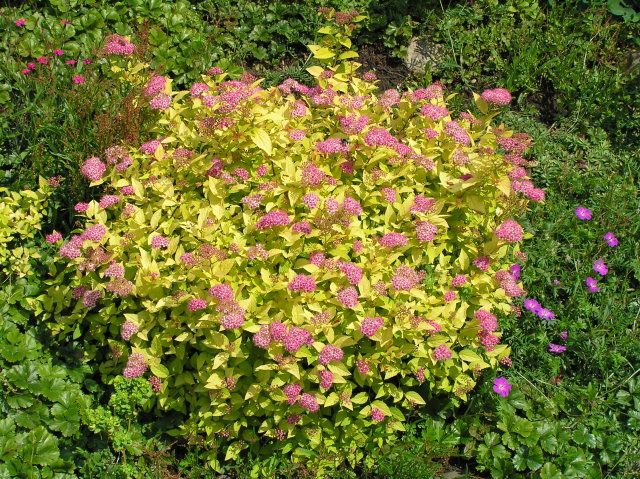
Spiraea Japanese varieties Golden Princess
little princess
The appearance of this type of Japanese spirea is fully consistent with the name. The height of the bushes is up to 0.8 meters. The crown is compact, has a rounded configuration. During the flowering period, the plant is covered with lovely pink flowers.The ellipsoid-shaped leaves are dark green in color. Little Princes makes luxurious hedges. This type of Japanese spirea is considered the most decorative. Even when planted separately, it will not go unnoticed. It is destined for him to be the highlight of any landscape composition, and it does not matter in what capacity the species will be present there.
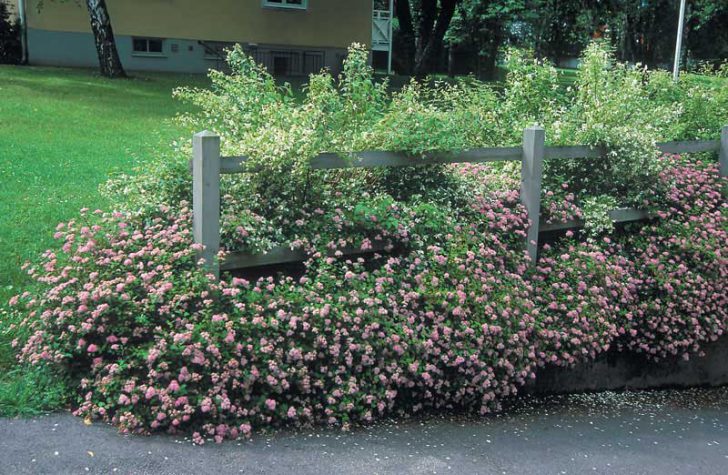
Spiraea Japanese varieties Little Princess
goldflame
This is the fastest growing variety of Japanese spirea. Shrubs are powerful, reaching a meter height. In spring, the plant is covered with bright orange-red foliage. The shade of the crown changes throughout the season, turning bright yellow during flowering and changing to copper-orange in autumn. Gold Flame feels great in urban environments, so it can often be found in parks.
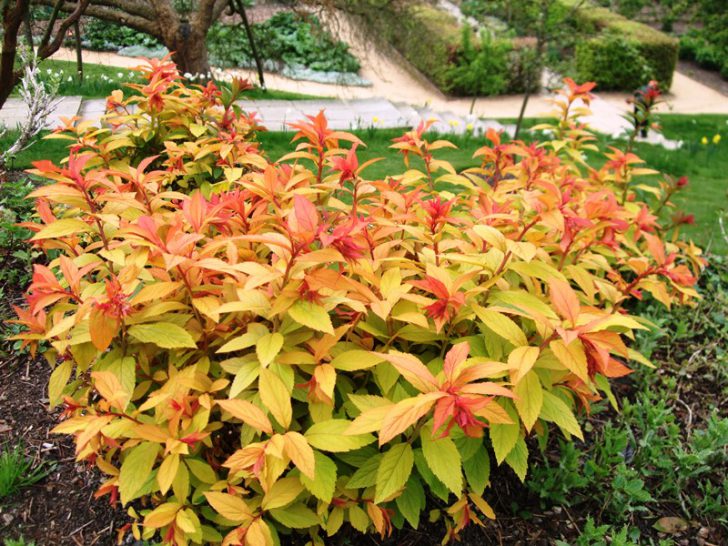
Bright variety of Japanese spirea Goldflame
Crispa
Graceful and incredibly beautiful plant. Low-growing bushes have a spherical crown, formed from wavy serrated leaves, and are distinguished by a pinkish-purple hue of flower petals. Crispa is good in borders and on the slopes of rock gardens.
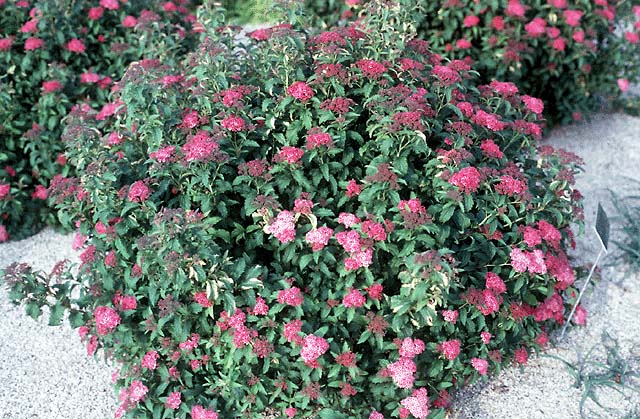
Type of spirea Japanese Crispa spherical shape
Spiraea Shirobana
This species is also called a chameleon plant. The reason for this is the wide range of colors of the ejected inflorescences. At the same time, buds from light pink to rich red hues can bloom on the bush. Spirea Shirobana belongs to the group of medium height. The height of its bushes is about 80 centimeters.
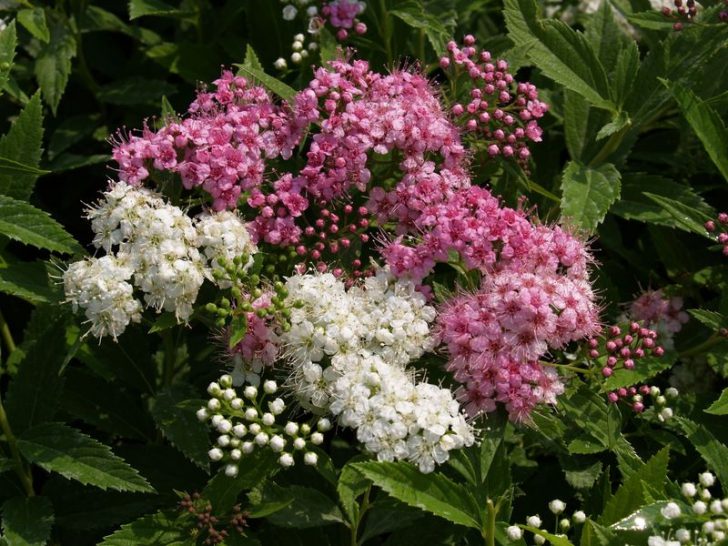
Japanese spirea "Shirobana"
How to plant Japanese spirea
"Spirea is a picky plant"
Since spirea is a flowering shrub, the place for its vital activity should be sufficiently illuminated. If there are no such open areas, then the plant can be planted in partial shade of tree crowns. There she will also feel quite comfortable. The fertility of the soil does not really matter, and this fact makes the plant a universal material in landscaping. When planting spirea, you need to take into account the varietal characteristics of plants.
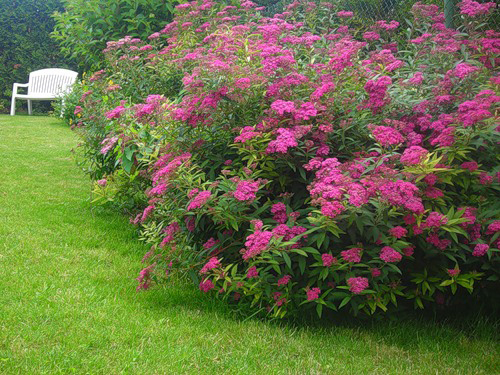
Japanese spirea is recommended to be planted in well-lit areas.
For example, dwarf species prefer rocky soils, so they will be comfortable in rock gardens.
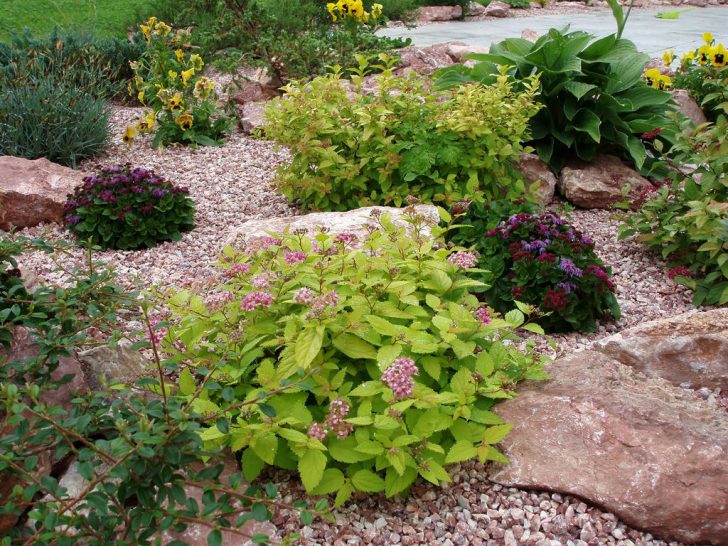
Dwarf spirea will be a good rock garden decoration
Spirea is a picky plant. It easily takes root in any conditions. Bushes are planted in the spring and autumn, preferably in rainy weather or at least on a cloudy day. At the place of future growth, they dig a hole, the size of which should be proportional to the size of the roots. If there is at least a small layer of fertile soil on the site, then fertilizers can not be added. Provided that you need to plant a group of seedlings at once for digging holes, it is worth taking a garden drill. Bushes planted as hedges should be placed in a checkerboard pattern.
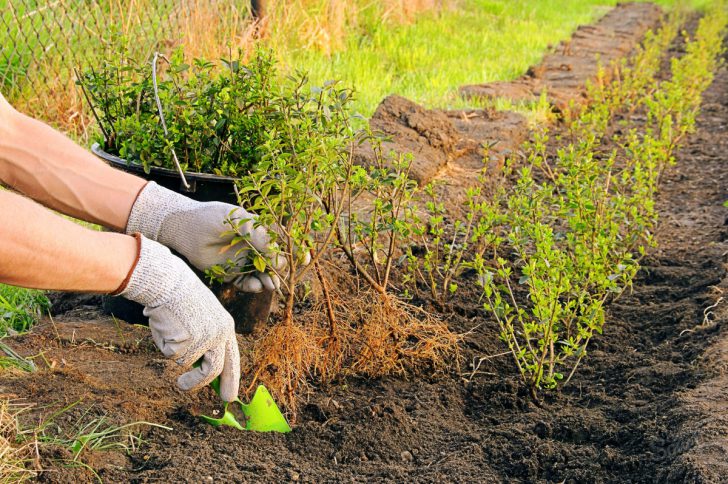
Landing Japanese spirea in the ground
The step distance in a row is up to half a meter, the indent between the rows is made from half a meter to seventy centimeters. Tall, with a spreading crown, plants are allowed to be planted at meter intervals.
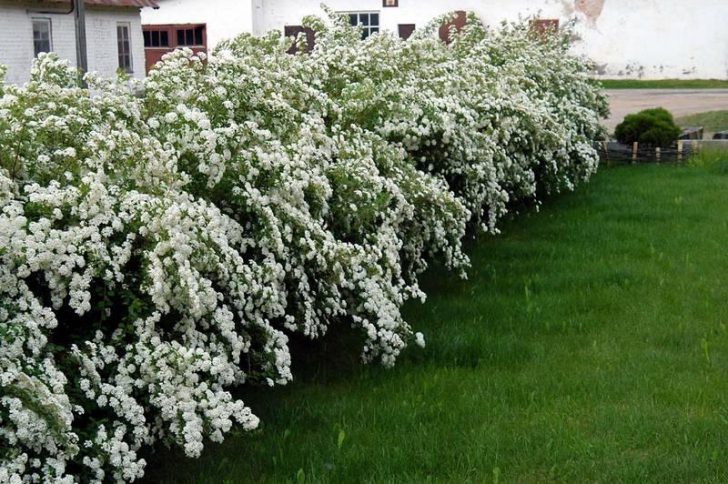
Japanese spirea has a wide spreading crown
If the landing pits are located in a low-lying area, they must be equipped with drainage. On the drainage cushion you can use:
1. Broken brick.
2. Sand.
3. Rubble.
The landing pit must have strictly sheer walls. Approximate parameters of depth and width are 40 by 50 cm. the prepared well is left to ventilate for several days. Immediately before planting the bush in the pit, a little nutritious earth mixture is poured onto the drainage layer, which should include:
1. Soddy or leafy soil (2 parts).
2. Sand (1 part).
3. Peat (1 part).
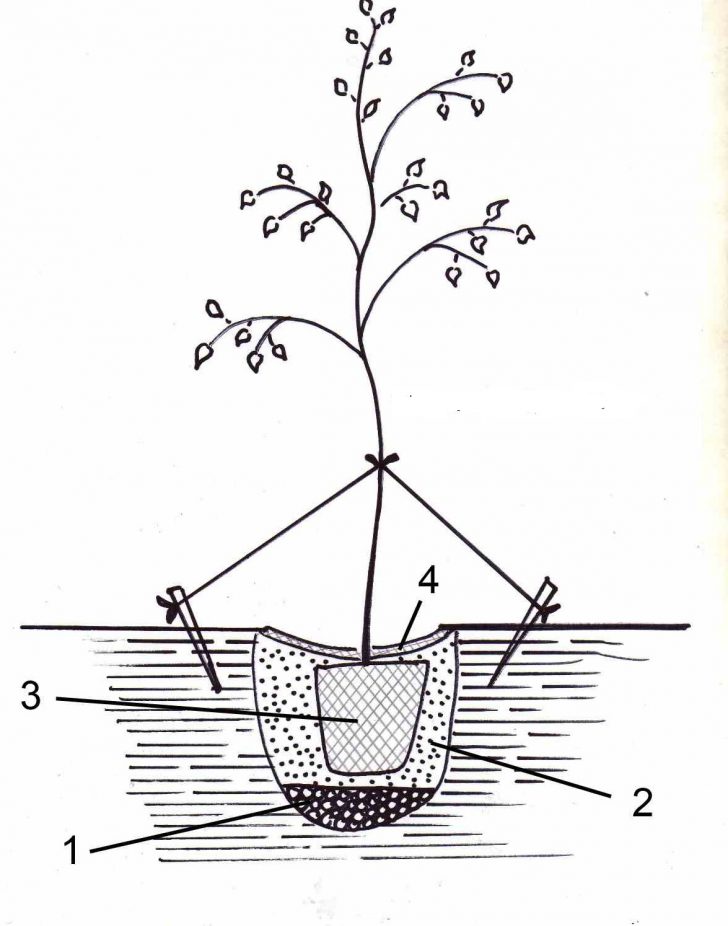
Planting hole for Japanese spirea
If the soil is not very fertile, then when planting it is worth adding fertilizer with a complex composition to the hole. Long-playing AVA-complexes are best suited.One tablespoon will be enough to ensure uniform feeding of the bushes over the next three years. Chlorine-free granules contain the entire set of macro and microelements, except for nitrogen, so it is added to the soil separately. The latter is found in mineral complexes containing urea and in organic matter (compost, which is applied in a 5-7 cm layer).
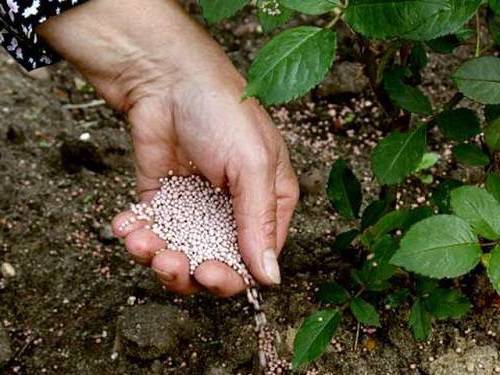
When planting Japanese spirea, it is recommended to apply complex fertilizers
Before the seedling goes into the prepared hole, you need to inspect its roots. Weak and with traces of damage processes are removed, too long - shortened. Similar actions are performed with the vegetative part of the bush. It can be safely shortened by a whole third of the length. Such pruning will be especially good for seedlings with an overdried root system.
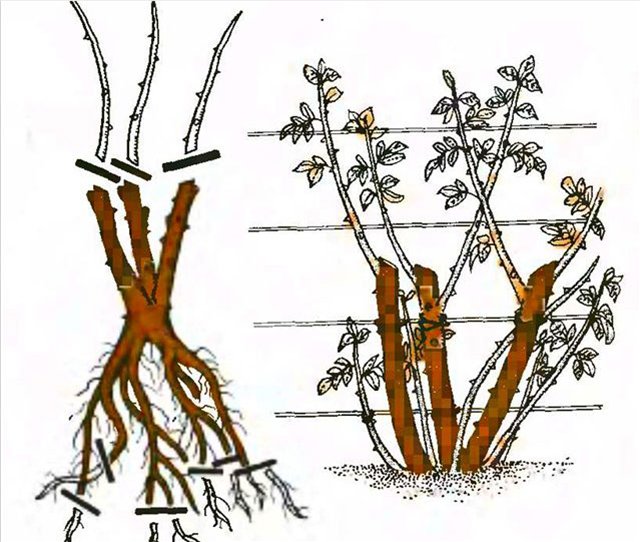
The scheme of pruning roots and stems before planting
Before planting, it is a good idea to place such a seedling for several hours in clean water. The soil around the planting material is compacted. Considering the fact that the roots of Japanese spirea have a superficial location, loosening and mulching of trunk circles is useful for them, for which you can use:
1. Peat.
2. Husk seeds.
3. Compost.
4. sawdust.
Mulching will retain moisture and protect the root system from freezing.
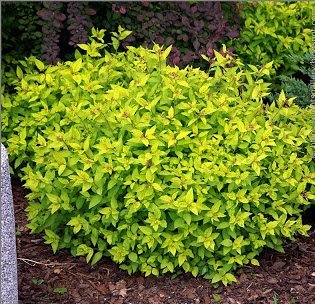
Mulching spirea with Japanese peat and bark
Japanese Spirea Care
Spirea is a plant from the unpretentious category, so it will not make any excessive demands on its content. It will suit moderate watering. In a drought, the bushes will be content with a couple of buckets of water poured under them once every two weeks. Abundant watering of spirea will be required only after pruning.
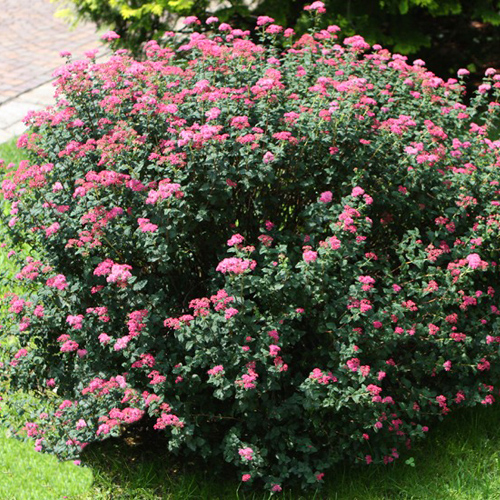
Japanese spirea does not need frequent watering.
What you need to monitor is the condition of the trunk circle. The soil in this area should be loose and free of weeds. A good prevention of drying out, clogging and overgrowing with grass will be mulching with compost, bark or peat.
If you want the spirea to bloom for a long time and luxuriantly, treat the plant with liquid dressings. You can do this twice in a season. The first time fertilizer should be applied immediately after the spring pruning, and the second time - in the middle of summer. It is good to use mullein infusion with the addition of superphosphate. For 10 liters of infusion put 10 grams of fertilizer. Under each bush you need to add 3 liters of the finished mixture
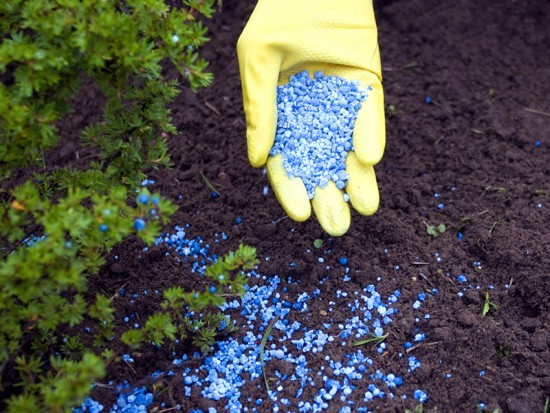
Spirea is fertilized twice a season.
We have already talked about the endurance of spirea, but in a snowless and too cold winter, you still have to take extra care of it and cover the roots of the bushes with a layer of twenty-centimeter-thick foliage.
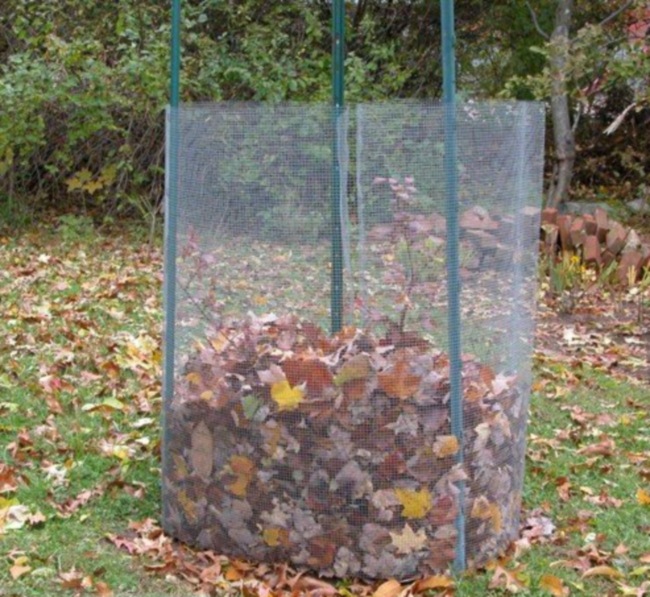
Shelter spirea foliage for the winter
Experienced gardeners have compiled a real care calendar for these magnificent plants, which indicates when and what to do.
back to index ↑Calendar of events for breeding and caring for spirea
March, April
Purchase of material and planting
If you want to have a hedge of spirea bushes or just beautiful landscape compositions with her participation on the site, in March-month you already need to be puzzled by the question and start looking for high-quality planting material. First of all, you will need to contact a reputable nursery and inquire about the availability of the desired varieties of Japanese spirea. To save money, you can buy seedlings with an open root. To do this, the required number of bushes is reserved, a deposit is made and the excavation time is negotiated.
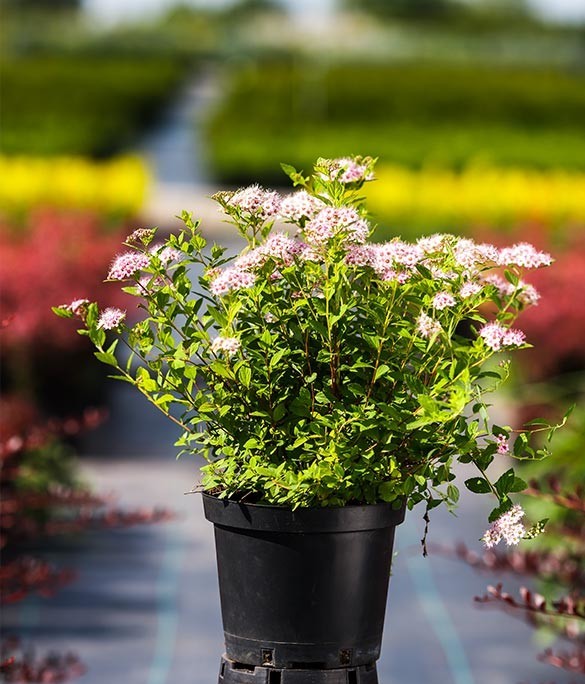
Japanese spirea seedlings
You will plant spirea in open ground no earlier than in April. You can start the procedure immediately, as soon as the earth dries up and you can walk on its surface without falling into the mud. Purchased seedlings can be stored for about a week before planting, the main thing is to place them in a shady place by immersing the roots in buckets or placing the bushes in boxes lined with foil.Spirea is a very tenacious plant, therefore it tolerates a change of "residence" well. It can be transplanted at almost any time of active life.
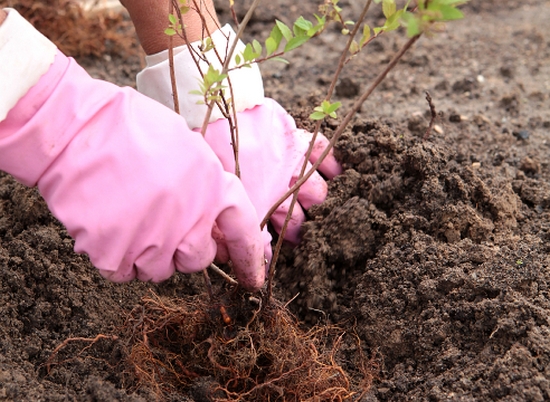
Japanese spirea seedlings are planted in April
pruning
Spring is the period of sanitary and anti-aging pruning of spirea. Your task is to cut out dry and damaged branches so as not to break the symmetry of the bush. In plants that have crossed the 4-year milestone, the oldest shoots are cut to the ground.
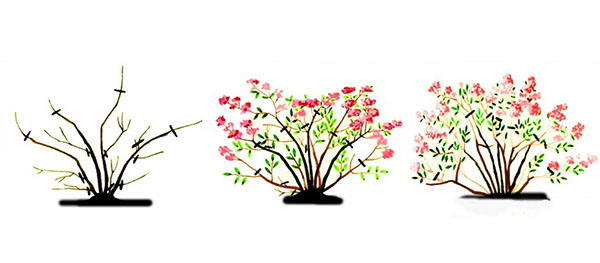
Pruning spirea to form a bush
Reproduction by division
Cool weather is a great time to get extra planting material. In the spring, you can dig up the young shoots of spirea and divide the bush into several parts.
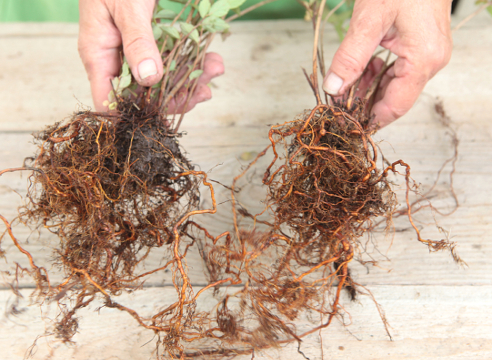
The division of the Japanese spirea bush
Reproduction by layering
You can go the other way and propagate the Japanese spirea by layering. To do this, annual shoots must be bent down and laid in grooves prepared in advance in the ground. In order for the branch to lie as intended, it is pinned along its entire length and sprinkled with a layer of soil. During the coming season, you will receive several new bushes from it at once.
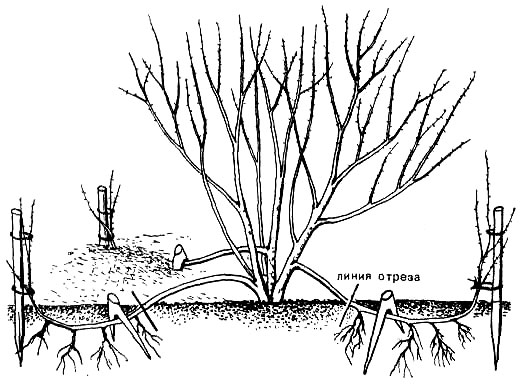
The principle of propagation of the bush by layering
May June
Purchase and planting of seedlings
In May, active trade in spirea seedlings in containers begins. They can be planted on the site throughout the season, however, it is better not to hesitate in purchasing the varieties you like, since the most attractive subspecies are very quickly sorted out.
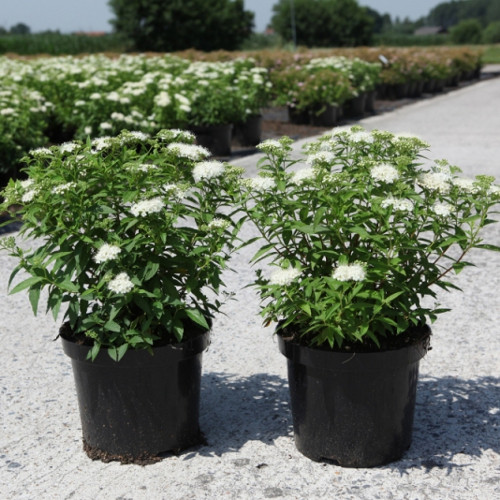
Spirea seedlings in containers
Do not be discouraged if you suddenly come across a “exhausted” seedling, with roots “cemented” in a dry earthy coma. Spireas are very stress-resistant and the bush can really be brought back to life. It is done like this. A few hours before the intended planting, the root part is lowered into the water. After the time has elapsed, the bush is removed and several vertical cuts are made along the side of the coma, deliberately trying to slightly damage the roots. This technique will stimulate their growth and development. After the procedure, the lump is powdered with root and the seedling is sent to the ground.
July
Stimulation time
If you want to extend the period of abundant flowering, you need to take a secateurs and cut off the tops of already faded shoots.
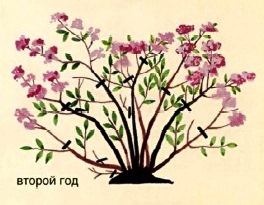
Trimming off faded flowers will prolong flowering.
Dealing with reverse shoots
On yellow-leaved species of spirea Goldflame and Golden Princess, shoots with standard green foliage often make their way. They should be cut to the ground immediately after detection.
Aug. Sept
Recutting
It is carried out after the complete flowering of the shrub. The ends of the shoots that have shed their color are removed. It is more convenient to do this with garden shears than secateurs. That way things will move much faster. Timely pruning will prevent self-seeding. It will allow you to more compactly form the crown of the bush, in addition, it will save you from contemplating dried seedlings, although in winter they will be a real decoration of the landscape. At this point, decide for yourself how justified pruning or preserving the fruit is. Shoots are shortened to the first large buds.
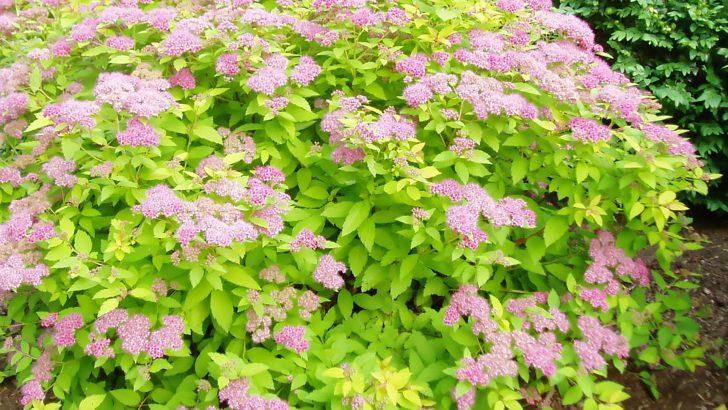
It is very important to make timely pruning of spirea
When rejuvenating pruning, do not be afraid to cut off something superfluous. Radical pruning is the key to the birth of new strong young shoots. It is risky to miss it. Without this procedure, the old shoots will deform the crown of the bush, bending the branches to the ground, and the tops of the shoots will dry out. Not only will aesthetics be lost - the plant may disappear altogether.
October
Sowing time
This month, Japanese spirea seeds are harvested, which will be sown before winter.
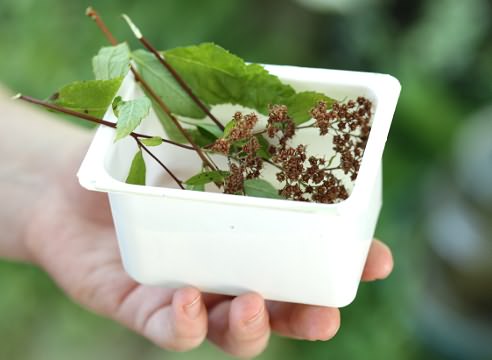
Harvesting Japanese spirea seeds
What are plants afraid of?
Spirea, in fact, rarely gets sick, but it is not immune from pest attacks, like any other green space. Bushes are most actively attacked:
1. Aphid.
2. Spider mite.
3. Leaflet.
The last one appears in May.Its caterpillars are so voracious that they can destroy up to 60% of the crown, gnawing succulent leaves along with pedicels. You can fight the leaflet with the Primor drug at a 0.1% concentration. Its use in 95% of cases helps to get rid of pests in one spraying.
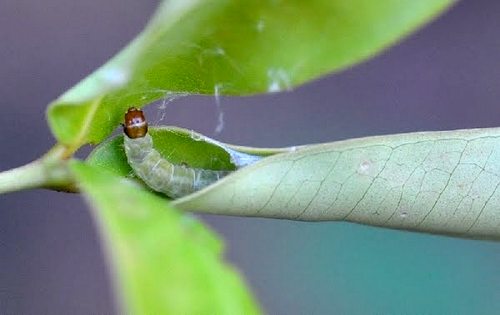
Leaflet on the leaves of Japanese spirea
The most dangerous enemy of spirea is the spider mite. Its appearance is evidenced by a light cobweb in the crown and holes in the inflorescences. The leaves of the affected plant will dry out and fall for no reason. The parasite is most active during the dry period. You can effectively deal with spider mites: 0.15% phosphamide solution, 0.2% acrex solution or good old karbofos in 0.3% concentration.
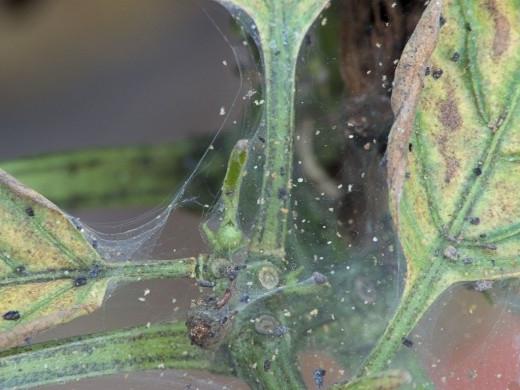
Japanese spirea affected by spider mites
Preventive measures to prevent the attack of pests are regular loosening of the soil, proper watering, timely top dressing.
back to index ↑Spirea in the garden landscape
Japanese spirea with its species diversity and the extraordinary beauty of the bushes is an indispensable element of garden decor. In addition to being amazingly aesthetic, it is also loyal to nearby plants. Spirea bushes easily tolerate even the most merciless pruning, so they can be given the most unconventional shapes. Spirea is always magnificent and looks great not only in small gardens, but also in huge parks.
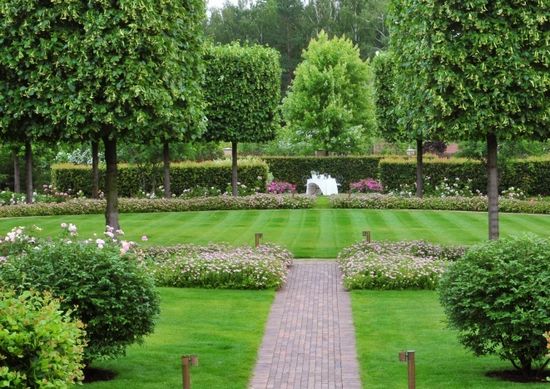
Spirea also looks great in large parks.
Shrubs become a luxurious addition to compositions of undersized trees. They, being strewn with delicate flowers, look spectacular separately standing on a green lawn. No less interesting are the bushes in the rocky garden, planted among arborvitae, cypress, junipers and dwarf firs.
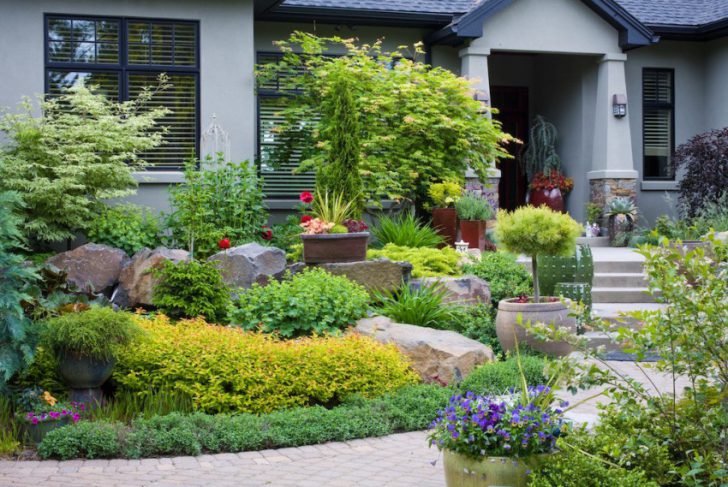
Japanese spirea in a rocky garden
Spirea serves as an excellent "tamping" of larger relatives:
1. Kalina.
2. Chubushnik.
3. Lilacs.
4. Rhododendron.
Undersized species of spirea are often populated by rockeries.
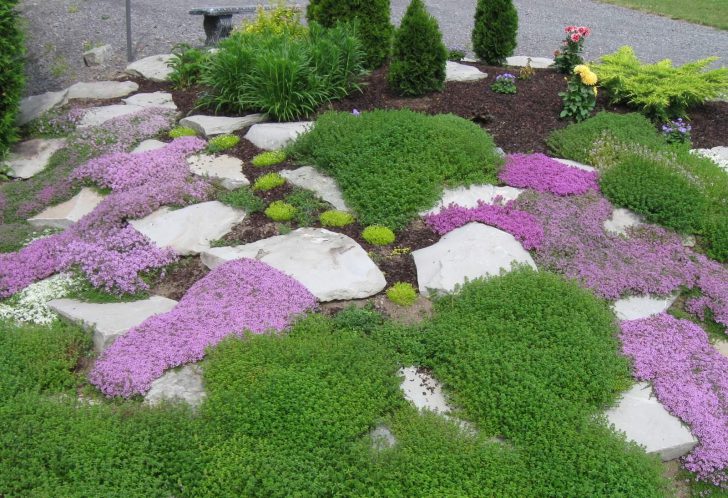
Dwarf Japanese spirea in rockery
Designers like to use spirea as a material for creating hedges. Her seedlings are affordable, and the hedge of them is easy to cut into the desired shape. Frequent pruning deprives the shrubs of the opportunity to bloom, but this annoying flaw is more than compensated for by the beauty and unusual color scheme of the foliage.
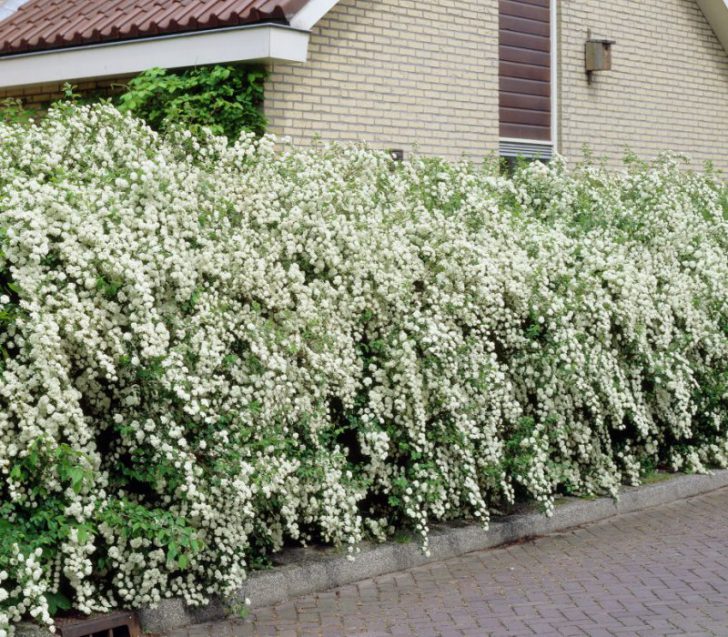
Spirea hedge
With whom is the spirea "friends"?
"The use of Japanese spirea with unique decorative foliage will make decorative compositions attractive until late autumn"
Spirea flowers are unique. From their bushes, blooming in different periods, you can create real landscape paintings. The use of Japanese spirea with unique decorative foliage will make decorative compositions attractive until late autumn. Its large-scale group plantings look very impressive in combination with lilac and mock orange bushes, with padding with primroses, curb flyers, bulbous lilies of the valley, and astilbes. The decorativeness of such a composition is guaranteed from early spring to the last warm days.
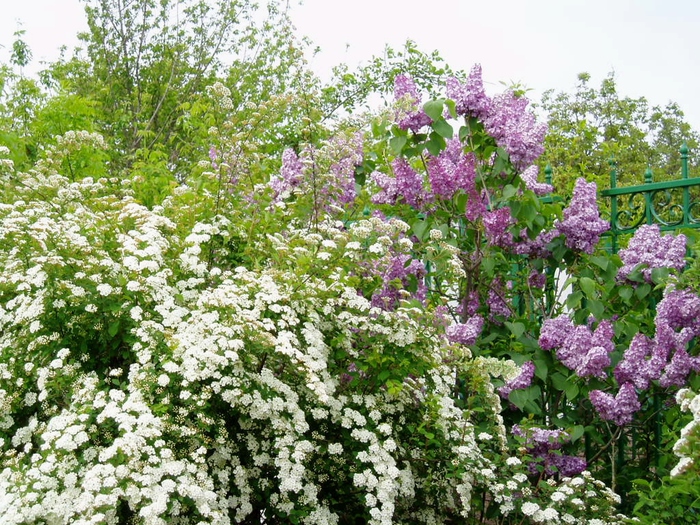
Combination of spirea and lilac
In the trunk circles of a lonely standing spirea, carpets woven from ground cover perennials will be appropriate:
1. Brilliant dark green periwinkle.
2. Yellow-colored saxifrage shadow.
3. Variegated lungwort.
4. Painted lamb.
5. Mouse gray cerastum.
A good solution would be to complement the composition with spring soloists - bulbous and small-bulbous flowers such as multi-color daffodils, tulips, hazel grouses, blue scilla streams, lilac glades of hiondox, lilac-pink corydalis and piercing blue circles of muscari.
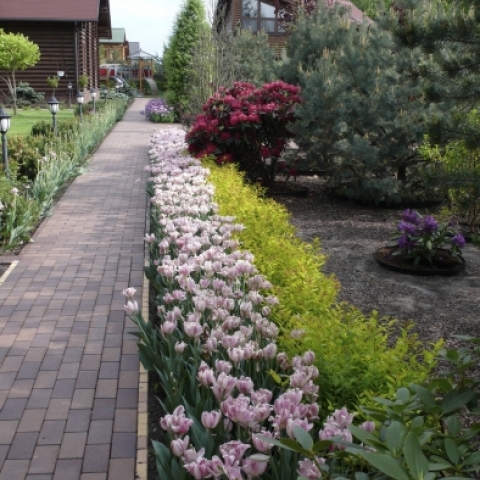
Flower garden of tulips and spirea golden princesses.
A win-win move would be to plant perennial viola and violets in front of the spirea bush, blooming until the very snow.
back to index ↑Conclusion
If Japanese spirea is not yet present on your site, then do not apply to acquire it next season. As you can see, the plant practically does not need your attention and care, and for those fractions of it that you devote to it, it is ready to generously thank you with a violent scattering of elegant inflorescences.
Photo gallery - Japanese spirea
Video
